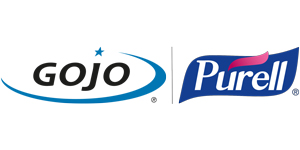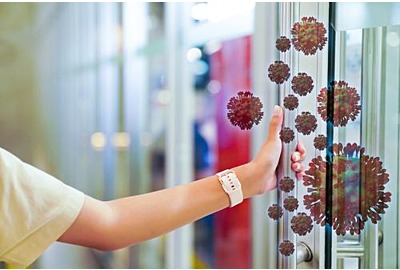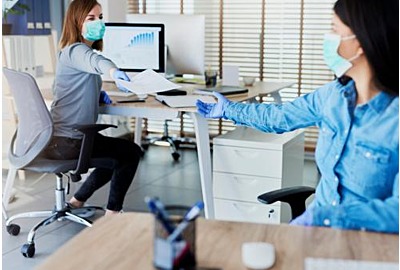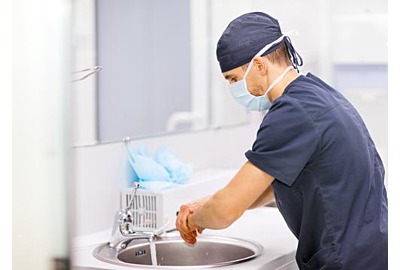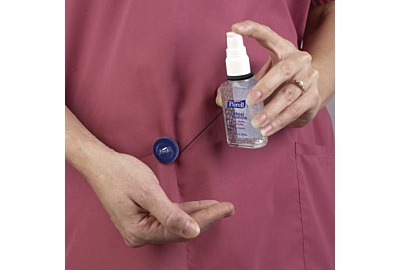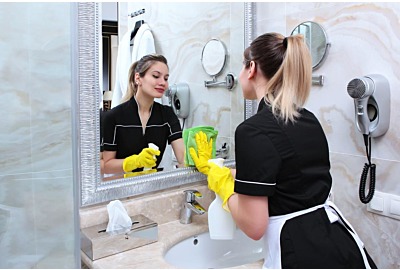Diseases are mainly passed on from one person to another. However, there is also a risk of transmission through contact with contaminated surfaces. Surface cleanliness is particularly essential in areas where lots of people come and go.
How long do pathogens survive on surfaces?
Pathogens can adhere to objects. And if door handles or other touchpoints are used by different persons, these germs can be spread. Some of them stay infectious for quite a while.
The lifespan of different germs on hard surfaces can vary considerably[1]:
- Flu virus: up to 2 days
- Noro- and Rhinovirus: up to 8 weeks
- Streptococci: up to 6 months
- Salmonella: up to 4 years
How long does Coronavirus survive on surfaces?
How long SARS-CoV-2 can survive on different surfaces has not been definitively confirmedyet. So far, two studies have been published on this topic. The first study was published in the New England Journal of Medicine (NEJM). For this research, the virus was distributed as an aerosol, that is an air-liquid mixture, on different surfaces. As an aerosol, the virus remained viable for at least 3 hours, whilst samples deposited on stainless steel lasted up to 72 hours.
The second study was released in the journal The Lancet. For this study a droplet with a certain virus concentration was applied on different surfaces. On metal or plastic, the pathogen remained viable for up to seven days. It’s worth noting that the presence of germs does not necessarily lead to infection or illness. An outbreak of disease depends on how many viruses are on the surface and how well an individual’s immune system can cope with the pathogen.
Which products are suitable for surface sanitising?
However, the presence of pathogens on a surface does still present a certain risk of infection in areas where many people meet. Tests with various solutions for surface sanitising showed that agents based on the alcohol ethanol are highly effective against 99.9 percent of the most harmful viruses - including the SARS-CoV-2 virus.
The Robert Koch Institute recommends frequently touched objects should be sanitised, especially in hospitals where staff and patients need to be protected. In our opinion surface sanitising is also useful in hotels, restaurants and other public facilities and gives guests a feeling of security during the pandemic.
That is how it works:
- Spray 10 to 30 ml/m2 directly onto the pre-cleaned surface
- Wait for 30 seconds
- Do not rinse off
Mission accomplished!
Product recommendation
PURELL® Surface Sanitising Spray
Effective sanitising wherever it is necessary.
- without leaving streaks or sticky residues
- ready for use
- no wiping
- free from fragrances
- ECOCERT certified
- 100% natural ingredients
- biodegradable
[1] Axel Kramer, Ingeborg Schwebke u. a.: How long do nosocomial pathogens persist on inanimate surfaces? A systematic review
